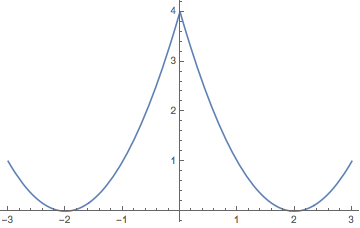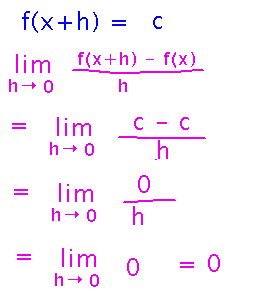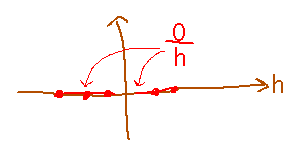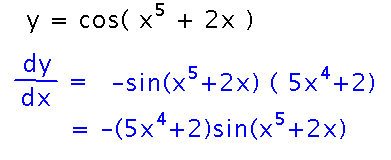Misc
I will be out of town at a conference Thursday and Friday this week. Instead of face-to-face class meetings, we will do online discussions I can be part of while traveling. SI will meet as usual.
Bring laptops on Wednesday
Questions?
Problem Set Question 3
How to approach the question?
Recall that a derivative is essentially a slope, so visually judge where the slope of the curve is positive, negative, etc.

What about the part of question that requires explaining why the derivative is undefined at x = 0?
The derivative is discontinuous at x = 0, and you can support that claim either visually or a little more theoretically. Visually, the slope of the curve is positive, and in fact increasingly so, on one side of x = 0, but increasingly negative on the other, so the derivative must jump from positive to negative at x = 0. More theoretically, if you imagine evaluating the derivative as a limit at x = 0, positive values of h will produce a negative derivative, while negative h will produce a positive derivative, i.e., the one-sided limits of (f(x+h) - f(x))/h as h approaches 0 differ.
Question 1 Part 2
The limit definition of derivative produces a numerator of (x+h)/(x+h+1) - x/(x+1). Now what to do?
Try putting both parts of this expression over a common denominator, and see if the entire limit expression simplifies.
Deriving the Constant Rule
What does f(x+h) become in this derivation?
The trick is to realize what it means to say that f(x) = c:

In particular, f(x+h) is also c, no matter what x and h are. The limit is then straightforward to evaluate:

Notice that even though plugging h = 0 into 0/h would be undefined, that’s not what limits are about: they’re about the trend in a function’s behavior near a value, and the trend near but not at h = 0 is definitely for 0/h to be 0. (Plugging the value being approached into the function is basically a special case that sometimes works, thanks to the limit laws, but it’s not the definition of limit.)

The Chain Rule
Section 3.6
Warm-Up
What is the derivative of sin(3x)?
The chain rule applies because you have one function (3x) inside the argument to another (sin).

Now plug the inner and outer functions into the chain rule formula:

Examples
Find dy/dx if y = cos( x5 + 2x )
This is similar to the warm-up example. The outer function is cos, and the inner is x5 + 2x.

What about y = (x4 + 3x2 - 6x + 9)5? Here the outer function is “raise to the 5th power,” and the inner is a long polynomial. Although the functions aren’t as clear as before, the chain rule formula still applies:

Next
More practice with the chain rule.